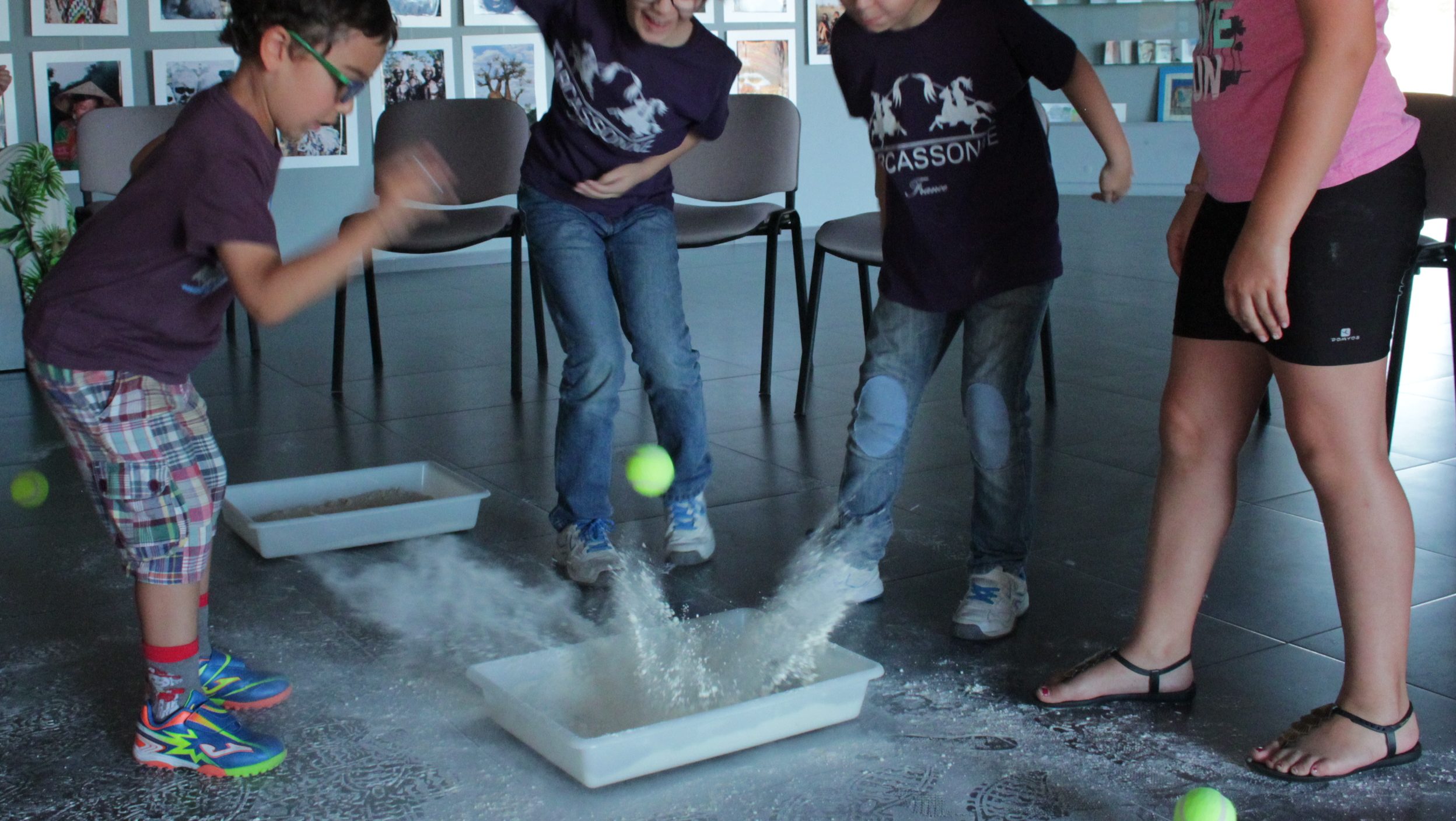Every Saturdays afternoon, from 17:00-18:00 (Summer) 16:00-17:00 (Winter), OLA offers activities for children where the young astronomers learn more about science and astronomy in an entertaining and relaxed way.
Registration required via geral @ olagoalqueva.pt.
Cost: 5€ per youngster from 6 to 14.
 Sundial Construction
Sundial Construction
By building a sundial, the relations between day and night and the Earth’s rotation are explored. Moreover the variation of the length of the day and the connection with the tilt of Earth’s axis and the movement of translation around the sun are motivated.
 Target Shooting – Understanding the formation of the Moon craters
Target Shooting – Understanding the formation of the Moon craters
Activity where impacts of meteorites and crater formation are simulated. The effect of the density and impact velocity have on the crater formation is analysed. The formation of the lunar surface is also explored.
 Construction of a spectroscope
Construction of a spectroscope
The composition of light and its propagation is explored in this activity via the analysis of images of rainbows and by using the decomposition of light using prisms. Spectroscopy is presented as the way to learn the composition of stars.
 The night sky of Alentejo, myths and legends
The night sky of Alentejo, myths and legends
With a computer software, the Earth night sky is simulated and typical planets, galaxies and nebulas from outside sessions are identified and thoroughly explained.
 How do the ESO telescopes really work?
How do the ESO telescopes really work?
Questions such as how the small telescopes at home and the biggest telescopes in the world magnify the images of distant objects, and how astronomers find new planets around other stars, will be addressed.
 Nocturnal construction
Nocturnal construction
This are simple instruments that allow one to know the time by the observation of the Ursa Minoris Constellation (also known as Small Dipper, Small Bear, etc). Questions such as the Earth rotation, the origin of day and night and the orientation by the Northern Star are also explored.
 Exploring the Solar System: A trip from Mercury to Pluto and beyond
Exploring the Solar System: A trip from Mercury to Pluto and beyond
The solar system viewed in detail. The planets are presented one by one and their physical properties and particular features are analysed. The activity can be done using software or by visiting our 400m solar system to scale.
 Interplanetary scales
Interplanetary scales
In this activity, the students are introduced into the concepts of weight and mass and their relation with gravitational acceleration. The concept of gravitational force and free fall is also explored.
 Solar Observations
Solar Observations
Solar observation sessions, with safe telescopes specific for the sun. The nature of the Sun, as a star, its origin and evolution is explored. The dangers associated with the solar observation are also emphasized.
